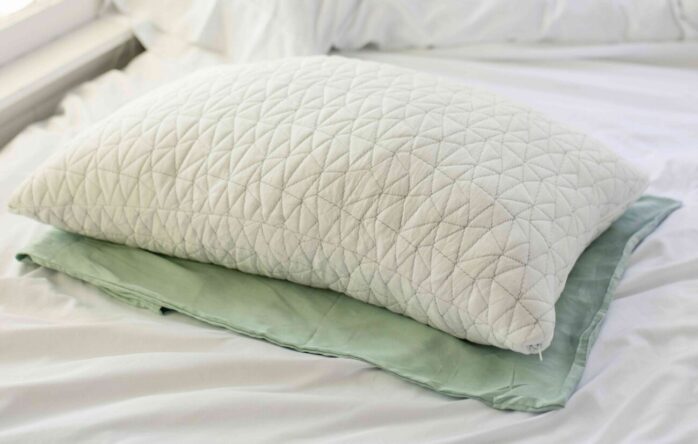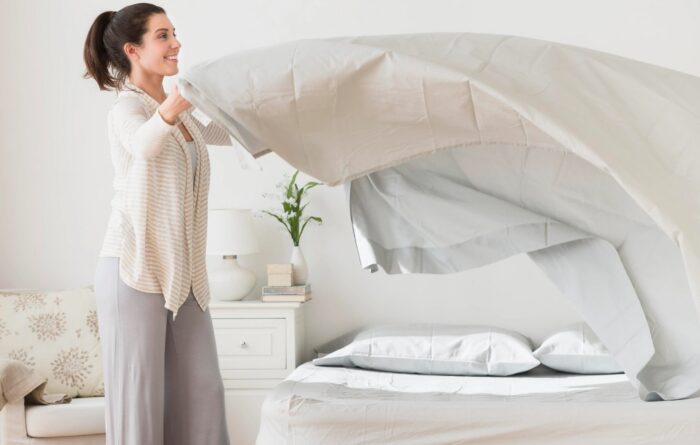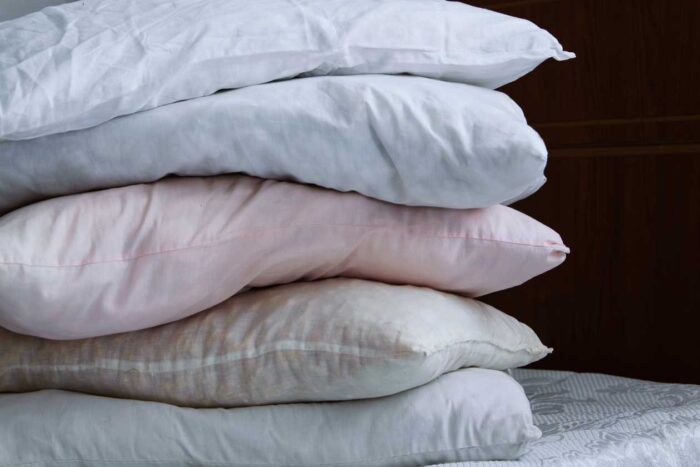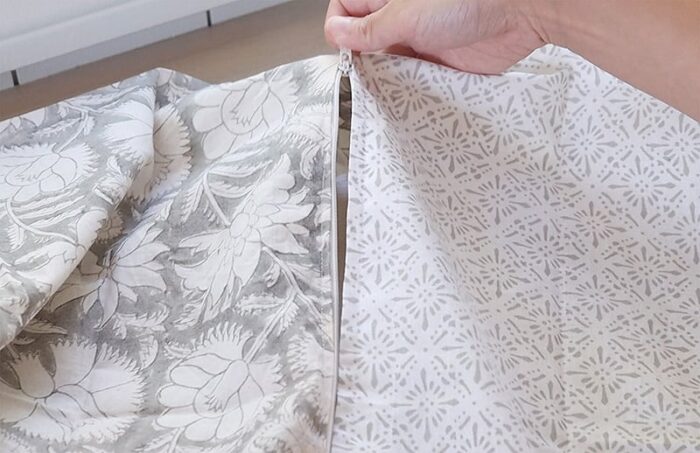
The quest for a night of quality sleep extends beyond the confines of a comfortable mattress to include the often-overlooked companion: our pillows. Integral to this pursuit is not just the selection of a suitable cushion but also its maintenance and timely replacement. This blog post embarks on a journey to unravel the nuances of pillow longevity, offering a comprehensive guide on when to replace and how to maintain these vital components of our sleep environment. Our aim is to equip you with the knowledge and strategies needed to ensure your sleep is not just restful but also healthful, by maintaining the hygiene and structural integrity of your pillows. Let’s dive into the world of cushions, unraveling the secrets to achieving and preserving optimal sleep quality through proper pillow care.

Significance of a Good Pillow
The importance of a well-chosen pillow transcends mere comfort, playing a pivotal role in the quality of our sleep and the health of our spinal alignment. A cushion that has passed its prime can be the culprit behind neck discomfort, back pain, and interrupted sleep patterns, thereby underscoring the necessity of both a mindful selection and timely replacement. It’s not just about filling a space beneath our heads; it’s about ensuring our body maintains a natural alignment, minimizing stress on the neck and spine. This delicate balance supports not only a deep, restorative sleep but also safeguards our long-term health and well-being. Acknowledging the profound impact a pillow can have on our sleep and overall health is the first step towards optimizing our sleep environment for the better.
Average Lifespan of a Pillow
The lifespan of a pillow is a tale of diversity, with each material, be it memory foam, down, or polyester, charting its own course through time. These lifespans are shaped by an array of factors, including but not limited to the frequency of use and the diligence of care they receive. For instance, memory foam options may offer longevity and consistent support over several years, while down cushions, though luxurious, may require more frequent replacements due to their tendency to clump and lose shape. Polyester, on the other hand, offers a cost-effective but shorter-lived solution. Understanding the inherent properties of these materials, alongside their maintenance needs, can significantly influence their functional lifespan, guiding users in making informed decisions about when it might be time to seek out a new sleep companion.

Signs It’s Time to Replace Your Pillow
The journey of a pillow from its pristine state to the point where it no longer serves its purpose is marked by several telltale signs. Lumps, visible wear and tear, and a noticeable decline in support are clear indicators that it’s time for a replacement. Additionally, if you find yourself adjusting your cushion frequently throughout the night in search of comfort, or if you wake up with neck pain or headaches, these are signals that your cushion may no longer be providing the support it once did. The importance of heeding these signs cannot be overstated, as they directly impact the quality of your sleep and, by extension, your overall health. Regularly assessing your pillow’s condition and being proactive about replacement can make a significant difference in your sleep experience.
Frequency of Pillow Replacement
Industry experts and sleep professionals generally recommend a replacement timeline that varies by cushion type, but a good rule of thumb is to consider a change every 1 to 2 years. This guideline, however, is not one-size-fits-all. Memory foam pillows, known for their durability and shape retention, might only show signs of wear after several years, whereas down and polyester fill options might begin to deteriorate sooner. The key to optimal sleep health is not just in following general guidelines but in observing the unique wear patterns and lifespan of your own pillow. Adjusting replacement frequency based on personal use and the specific signs of wear can help ensure that your sleep is not compromised by a cushion past its prime.

Personal Factors to Consider
The decision of when to replace your cushion can also be influenced by personal health and sleep habits. For individuals with allergies, for example, the accumulation of dust mites and other allergens within a pillow can necessitate more frequent replacements. Similarly, those with specific sleeping positions might find that their pillows degrade differently, impacting the frequency with which replacements are needed. It’s important to consider these personal factors, alongside the general guidelines, to tailor your cushion replacement schedule to your unique needs. Listening to your body and observing how your sleep quality is affected by your pillow can guide you in making timely replacements that enhance your sleep experience.
Maintenance Tips for Extending Pillow Lifespan
Proper care can significantly extend the life of your pillow, keeping it fresh and supportive for longer. Utilizing cushion protectors, for instance, shields against sweat, oils, and spills, preserving the cleanliness and integrity of the filling. Regular fluffing helps maintain shape and comfort, particularly for down and feather pillows, while ensuring memory foam pillows are kept away from excessive heat can prevent them from breaking down prematurely. Additionally, adhering to washing instructions specific to your pillow’s material can prevent damage and reduce the buildup of allergens and dirt. These maintenance practices not only prolong the life of your cushion but also contribute to a cleaner, healthier sleep environment.

Choosing the Right Pillow
Selecting the right pillow is a critical step towards achieving sleep nirvana, with considerations extending beyond mere comfort to encompass sleeping position and individual preferences. Side sleepers, for example, generally require a thicker cushion to maintain neck and spine alignment, while stomach sleepers might opt for a softer, thinner option. Understanding the nuances of pillow types and materials can guide you in choosing a pillow that not only supports your preferred sleeping position but also aligns with your health and comfort needs. Investing time and thought into this selection process is essential, as the right cushion can significantly impact your sleep quality and overall well-being.
DIY Pillow Refreshing Techniques
In between replacements, there are several DIY techniques to refresh your pillow, extending its usability and maintaining comfort. Exposing pillows to sunlight for a few hours can eliminate moisture and kill off dust mites, while airing them out can help reduce odors and freshen up the fabric. For certain types, a tumble in the dryer with tennis balls can fluff up the filling, reviving its shape and comfort. These simple, cost-effective methods can breathe new life into your cushion, ensuring it remains a conducive companion for quality sleep until it’s time for a replacement.

Common Mistakes to Avoid
A common oversight in pillow care is neglecting regular maintenance, such as fluffing and proper cleaning, which can lead to premature wear. Additionally, many people continue to use a cushion beyond its useful life, ignoring signs that it no longer provides adequate support. Addressing these mistakes by incorporating regular maintenance into your routine and being attentive to the condition of your pillow can significantly enhance your sleep quality and prolong the lifespan of your cushion.
Conclusion
Understanding the importance of pillow maintenance and replacement is crucial for ensuring optimal sleep health and overall well-being. By recognizing the signs that it’s time for a change, adhering to recommended replacement frequencies, and implementing care and maintenance tips, you can extend the life of your cushion and maintain a clean, healthy sleep environment. Remember, investing in and taking care of a quality pillow is not just about comfort; it’s about supporting your body’s needs for restorative sleep. Let this guide serve as a reminder to prioritize your sleep hygiene by giving your cushion the attention it deserves.






